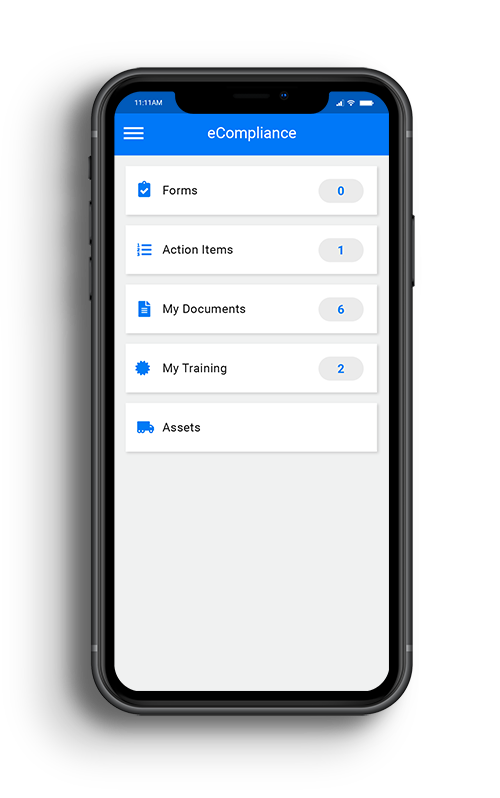
Share this Post
UPDATED
September 13, 2022
READ TIME
4 minutes
5 Ways Excel is Harming Your Company
In a joint attempt to save costs, protect the environment, and efficiently organize company documentation, the need for advanced document management is becoming a necessity for organizational growth. By replacing paper-based processes with electronic procedures, companies are effectively able to eliminate the printing, posting, and manual filing of paper documents that often contribute to numerous hours spent on their daily timesheets.
Many of us now turn to Microsoft Excel as our “go-to” tool because it’s familiar, comfortable, and more importantly, it’s what we already know. The hurdle exists, though, when our organization begins to grow and there is a higher risk for human error than ever before. 88% of spreadsheets contain errors, according to studies conducted by Ray Panko, a professor at the University of Hawaii.
So, why are we so reluctant to explore a new avenue? Why are we so afraid of letting something else make us feel “comfortable?” As EHS professionals, we often use Excel spreadsheets to track inspection data, training results/requirements, and manage corrective actions. However, there comes a time when our needs surpass what a spreadsheet can handle and it’s time to consider an upgrade to a new solution with a more powerful functionality.
Here are 5 signs that indicate you are ready to move on to a cloud-based platform for your safety management system:
1. Clunky Spreadsheets
Are your spreadsheets getting excessively large? Is it a nuisance to email them to colleagues or store on your local server? If you’re spending time looking for ways to make your spreadsheets smaller or less cumbersome, you’re pushing the limit on what Excel was ever designed to do. As your organization grows, so will the size of your data. Ask yourself whether your spreadsheets are able to facilitate your future growth.
2. Where is the Center of Truth?
How reliant are your spreadsheets? Without the capability to have real-time data automatically entered into your documents, you lose the ability to make informed decisions from a structured and accurate report. The data from your spreadsheet is only as accurate as its most recent update (even if it was two weeks ago). You may be using a central tool like Drop Box or Google Docs to maintain a sense of “real-time” information, however these one-dimensional storage systems will solely act as a storage device – not as a single repository for all of your OHS needs.
3. Data Integrity
A study by Dartmouth College’s Tuck School of Business found that 94% of workplace spreadsheets contained manual errors. Every time data is entered or re-entered into a spreadsheet, your organization is running the risk of human error. Excel’s flexibility is what makes it such a wonderful resource, however it can also be its most restraining feature. There are no Excel tools or templates specific to OHS management to help you divide and manage your OHS data appropriately and efficiently. So are you confident your spreadsheet management is exactly what your organization needs?
4. Double Data Entry
Capturing and entering the same data in multiple systems within an organization is counterproductive to say the least. Many organizations capture data in the field and then re-enter that data into a separate spreadsheet. If you have to enter information into multiple systems to derive the reporting you need, you’re essentially spending twice as much time (or possibly more) on tasks that should happen instantly. The opportunity cost for your time spent on administrative tasks should be evaluated to ensure you’re not neglecting more pertinent workplace priorities.
5. Accountability
It’s just as simple to delete data in Excel as it is to enter it. Within the context of today’s OHS legal and regulatory requirements, accountability and the ability to prove corporate due diligence is imperative. A proper health and safety program requires a company to effectively track OHS accountability within their organization. Unlike Excel, health and safety software provides you with the visibility to see beyond what was added or deleted, but also who did it and when. You’re also able to retrieve any lost information in case of any errors that occur along the way.
How Can EcoOnline Help
The EcoOnline EHS management solution will help you digitize and centralize all documentation and data into one cloud-based platform. This is easily accessible by all stakeholders and will serve as a singular source of truth for information and processes across the organization. Gain real-time information and insights from your teams on multiple sites, and track key safety data and trends to identify any gaps and deficiencies.
A digital solution will also help you mitigate risks faster with a comprehensive, 360-degree view into your safety data. Create a greater sense of accountability with your team members by assigning corrective actions and scheduling automated notifications for follow ups. Curious to learn more about how the EcoOnline digital solution can help you stay organized and create a safer workplace? Speak to one of our EcoOnline representatives today.
Learn How You Can Get EcoOnline
Complete this form and one of our safety experts will be in touch.

